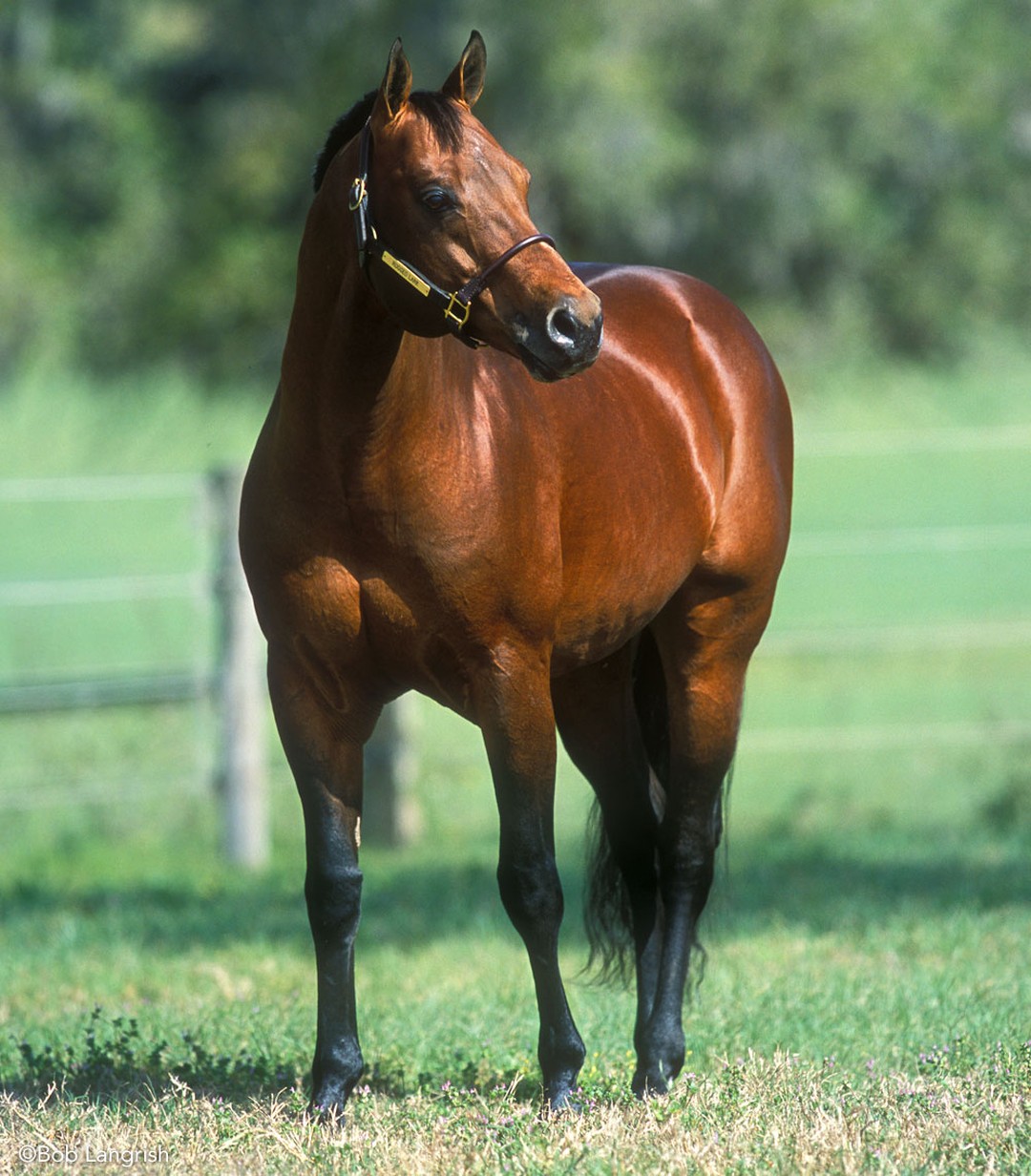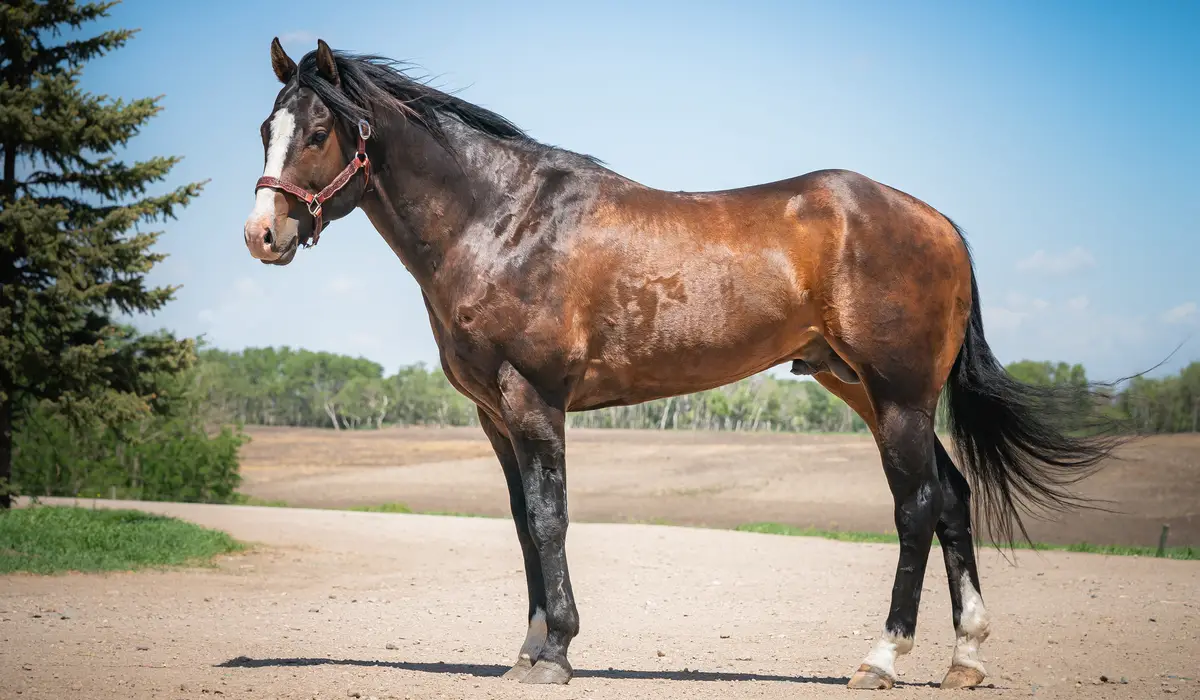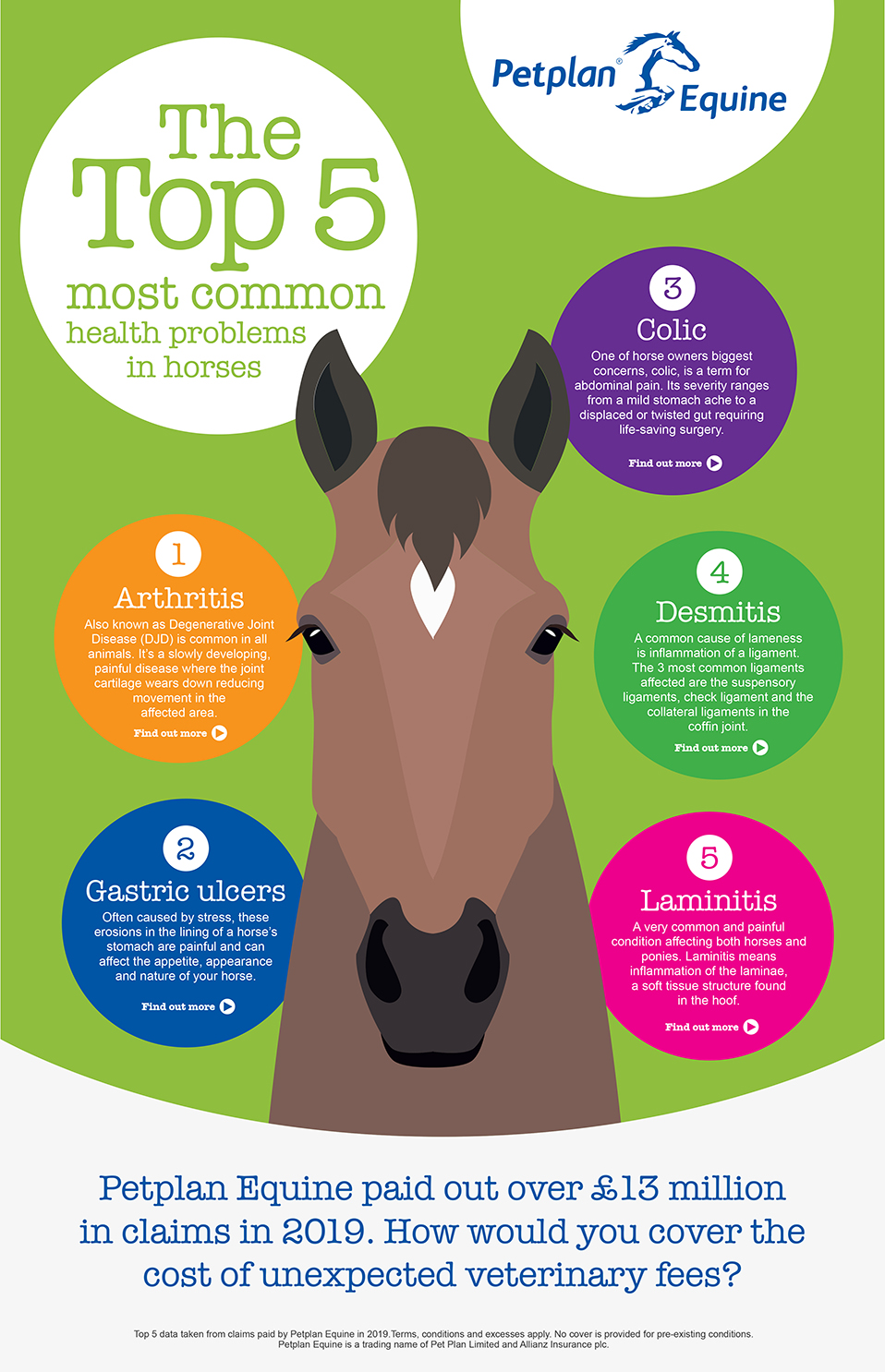The American Quarter Horse, a breed synonymous with versatility and speed, has long captured the hearts of equine enthusiasts worldwide. From its rich heritage to its distinctive Quarter Horse characteristics, the breed’s allure extends from the racetrack to the ranch. Understanding what makes a Quarter Horse requires a deep dive into its history, physical traits, temperament, abilities, uses, breeding practices, and the care required to maintain its health and vitality. This exploration will not only shine a light on the unique qualities of the American Quarter Horse but also provide insights into the elements that have made it an equine icon.
Delving Deeper into the Quarter Horse Legacy

The American Quarter Horse is intertwined with the nation’s evolution, from colonial times to the present. Its influential role in various American historical epochs demonstrates the breed’s adaptability and enduring presence in the equine industry.
Origins and Evolution of the Breed
Colonists in the New World sought to create a horse that excelled in short-distance races, leading to the birth of the early Quarter Horse in the 17th century. This selective breeding process produced a horse with unparalleled sprinting abilities, ideal for the quarter-mile races that were a popular colonial entertainment.
Contribution to American Expansion
As the frontier expanded, the Quarter Horse proved indispensable to settlers. These horses were not only agile and sturdy for the demands of the untamed West but also became integral parts of the communities, contributing to various aspects of daily life and the broader cultural narrative of the era.
- Invaluable to frontier settlers
- Capable of thriving in diverse conditions
- A key element of Western cultural identity
Influence in the Ranching Industry
The breed’s natural instincts and agility were further refined through ranch work, where they excelled in handling cattle. Their innate “cow sense” made them the preferred choice for cowboys working in the burgeoning cattle industry, leading to selective breeding to enhance these qualities.
Conservation and Formal Recognition
As the 20th century brought changes to ranch work and transportation, breed enthusiasts established the American Quarter Horse Association to preserve the breed’s legacy and promote its continued relevance. This initiative helped to institutionalize the breed’s standards and celebrate its historical significance.
| Historical Context | Influence of the Quarter Horse |
|---|---|
| 17th Century and Beyond | Development from racing to versatile utility |
| Pioneer Era | Crucial for settlement and cultural integration |
| 20th Century Onwards | Conservation efforts and formal recognition |
Continued Relevance and Symbolism
The image of the American Quarter Horse remains strong in contemporary culture, representing the pioneering ethos of the nation. Its evolution from a racehorse to a ranching mainstay epitomizes a spirit of adaptability and resilience, which resonates with equestrian enthusiasts and historians.
The careful stewardship of its lineage ensures the American Quarter Horse’s role in America’s equestrian heritage. The breed’s journey through history highlights its status as a quintessential American symbol, reflecting the country’s pioneering tradition and spirit.
Quarter Horse Conformation and Color Diversity

The Quarter Horse is a breed that personifies strength and agility, setting it apart in the equestrian world. Known for its physical prowess, the Quarter Horse is admired by horse aficionados and professionals. This segment focuses on the breed’s well-built conformation and the wide range of alluring colors they showcase.
Robustness and Symmetry in Quarter Horse Conformation
Noted for its robust and balanced build, the Quarter Horse’s conformation is key to its athletic performance. Its body showcases a blend of strength and flexibility, with pronounced shoulders and hindquarters that hint at its quick acceleration. The breed’s back is short and robust, ensuring steadiness. The design of its legs, featuring defined joints and durable hooves, prepares the horse for diverse environments.
The Spectrum of Quarter Horse Colors
Quarter Horses display an impressive variety of coat colors that contribute to their charm. This range reflects their rich genetic heritage, encompassing shades like chestnut, sorrel, bay, black, gray, palomino, dun, buckskin, and roan. While color preferences differ among horse enthusiasts, they do not affect the horse’s performance.
Distinguishing Features of the Breed
- Agile and compact physique ideal for swift actions
- Well-defined head shape indicative of intelligence
- Notable musculature around the hind leg region
The breed’s intelligent expression is framed by a broad, sculpted head with wide, alert eyes. The muscular neck of the Quarter Horse serves not just for an athletic appearance but also for enhanced balance and agility. The deep chest of the breed accommodates significant lung capacity, crucial for sprinting abilities.
Varying from sleek to dense, the texture of the Quarter Horse’s coat is adaptable to various climates and conditions. The mane and tail are often full and are points of pride during competitive displays or celebratory events.
The American Quarter Horse epitomizes the fusion of beauty and functionality. Its form has been refined through selective breeding over centuries, resulting in a horse that excels in both appearance and utility. The breed’s adaptability makes it equally at home on a ranch or in a competitive arena, further cementing its status as a valued American equine treasure.
Exploring the Disposition of the American Quarter Horse

Renowned for a temperament that many consider to be the ideal in the equine world, the American Quarter Horse is celebrated for its calmness, attentiveness, and willingness to cooperate. These attributes make it a dependable partner for a myriad of equine activities. This agreeable nature is the culmination of careful breeding practices intended to produce a horse that is not only proficient in its duties but also a pleasure to handle. The breed’s sociable and patient traits further emphasize its appropriateness for individuals of varying equestrian skill levels.
Cognitive and Emotional Capacities
The American Quarter Horse’s mental acumen goes beyond simple tractability. Known for their sensitivity and perception, these horses are adept at interpreting human cues and emotions, which strengthens their connection with their handlers and enhances their aptitude for training and responsiveness — a highly regarded feature for their participation in different equine events.
- Perceptive to human instruction and feelings
- Willingness and ease of learning
- Capability to develop deep connections with caretakers and riders
Composure and Flexibility
The breed’s composure is a reflection of its ability to adjust to varying conditions. The American Quarter Horse maintains concentration across different settings, whether it’s the excitement of competitive events or the tranquility of trail riding. Their flexibility is a hallmark that contributes to their reputation as versatile athletes and steadfast partners.
Social Dynamics and Herd Interaction
The American Quarter Horse’s affable nature usually carries over to its social interactions with other horses. They often show pleasant behavior within herd settings, respecting social structures without resorting to unnecessary hostility. This adaptability fosters a peaceful atmosphere in group settings and stables.
Reliability in Training and Activities
Consistency is a cornerstone of the American Quarter Horse’s character, particularly during training and performance. This constancy ensures safety and efficacy, positioning the breed as an exceptional choice for activities ranging from ranch duties to various equestrian competitions.
Supporting Emotional and Behavioral Wellness
To sustain the laudable temperament of the Quarter Horse, one must consider their psychological and behavioral well-being. It is essential to engage them with regular mental challenges, suitable social interaction, and stable training practices. A Quarter Horse that is mentally stimulated and content is more likely to display the esteemed traits associated with the breed.
In summary, the American Quarter Horse’s temperament distinguishes it as an equine breed that is as friendly as it is competent. Its combination of intellect, readiness, and gentle demeanor makes it a superior selection for diverse equestrian endeavors. Coupled with a compatible rider, the remarkable disposition of the American Quarter Horse is amplified, solidifying its celebrated status in the equine community.
Advancing Quarter Horse Athleticism

The athletic prowess of the American Quarter Horse is not only evident in its renowned speed but also in its precision, maneuverability, and endurance. These attributes have been honed through centuries, enabling the breed to succeed in a variety of equestrian challenges that require quick reflexes and sustained power.
Proficiency in Equestrian Disciplines
The agility of the Quarter Horse extends to disciplines such as show jumping and dressage, where they demonstrate their finesse and control. Their ability to execute intricate maneuvers with ease highlights their coordination and refined balance, enchanting onlookers and judges.
- Exceptional poise in technical performances
- Acute responsiveness to nuanced rider cues
Longevity and Adaptability in Performance
The breed’s capability goes beyond short-distance races, as seen in eventing and endurance riding. These sports test the breed’s stamina and adaptability, revealing their resilience across diverse conditions and prolonged efforts.
Displaying Diverse Skills in Competitions
In the arena of Quarter Horse competitions, the breed’s wide-ranging skills are exhibited. For instance, halter competitions focus on their physical form, while western pleasure emphasizes their smooth movements and even temperament. Each event underscores the breed’s extensive training and genetic refinement.
| Competitive Event | Skills Highlighted |
|---|---|
| Reining | Precision, Control |
| Cutting | Instinct, Agility |
| Barrel Racing | Agility, Focus |
| Team Roping | Collaboration, Speed |
Optimizing Training for Excellence
Comprehensive training is crucial for the Quarter Horse to achieve and maintain top form. A regimen that addresses cardiovascular fitness, muscular strength, and cognitive sharpness is employed to advance their capabilities. These routines are personalized to the horse’s specific discipline and aim to strengthen the partnership between horse and rider.
- Discipline-specific workouts
- Progressive training approaches
- Developing rider-horse synergy
Thanks to well-planned training strategies, the American Quarter Horse continues to redefine equestrian sport standards through remarkable athleticism and performance.
The American Quarter Horse, known for its agility and intelligence, has evolved from its historical ranching roots to fulfill multiple roles in modern society. With a heritage of practicality and performance, the breed now engages in activities that highlight its diverse talents. These equines have proven their adaptability, demonstrating their skills in various arenas and thereby enriching the American equestrian landscape.
The calm temperament and intuitive nature of the Quarter Horse make it a prime choice for roles in therapeutic settings. The breed’s presence in equine-assisted therapy programs aids individuals facing various challenges, offering support and comfort. Their reliability and patient nature enable participants in these programs to gain confidence and enjoy the therapeutic benefits of riding.
- Supporting rehabilitation through equine therapy
- Building emotional connections in a therapeutic context
- Enhancing physical and emotional recovery
In public service, especially within law enforcement, the breed excels in mounted police units. The Quarter Horse’s quick reflexes and ability to maneuver through crowds provide invaluable support in keeping communities safe. Their participation in public events demonstrates their composed nature and ability to interact positively with civilians.
- Active in patrols across various environments
- Engaging in public relations and civic participation
- Maintaining calm during diverse public interactions
The breed’s historical importance is celebrated through its involvement in educational programs and reenactments, conveying the American legacy to contemporary audiences. Their trainability and approachability make them suitable for such representations, fostering an appreciation for the nation’s equestrian past.
For individuals seeking outdoor adventures, the American Quarter Horse offers companionship and reliability. They are well-suited for navigating trails, participating in endurance rides, and accompanying riders on explorative journeys. Their sturdy conformation and stamina equip them for a range of recreational activities that satisfy the desire for exploration.
- Trail excursions across varied landscapes
- Demonstrating endurance in long-distance rides
- Partnering in outdoor adventures and camping
The versatility of the American Quarter Horse allows it to meet and exceed the varied demands of today’s equestrian activities. Whether providing therapeutic support, serving in public roles, engaging in educational endeavors, or accompanying adventurers, the breed continues to prove its significance and versatility, endearing itself to those who encounter it.
Genetics and its Impact on Quarter Horse Breeding

Genetic considerations are central to the advancement of the American Quarter Horse’s lineage. Careful selection of breeding pairs is essential to perpetuate the breed’s defining characteristics, including their physical attributes and temperament. This approach ensures the production of high-quality offspring, capable of excelling in various equestrian disciplines and embodying the breed’s historical significance.
Genetic Insights in Breeding Strategies
Breeders rely on genetic knowledge to make informed decisions when pairing stallions and mares. DNA testing is a valuable tool in this process, allowing the assessment of traits and the avoidance of hereditary issues. This methodical approach to breeding is aimed at improving the breed’s overall quality and adaptability for future demands.
- Use of genetic testing to enhance breeding outcomes
- Prevention of inheritable conditions
- Progressive improvement of the breed’s characteristics
Maintaining Genetic Health and Diversity
Responsible breeding practices are essential for upholding the genetic health of the American Quarter Horse. Breeders prioritize genetic variety to prevent the pitfalls of inbreeding and to maintain a healthy and diverse gene pool, which is key to the breed’s long-term prosperity and versatility.
| Genetic Breeding Goals | Breeding Strategies Employed |
|---|---|
| Diversification of Bloodlines | Expanding genetic diversity |
| Trait Optimization | Targeted selection of breeding pairs |
| Health Risk Reduction | Genetic screenings and health evaluations |
Upholding the Breed’s Quality
The AQHA plays a pivotal role in defining and preserving the breed’s standards. It maintains a comprehensive registry that tracks bloodlines and genetic information, guiding breeders in their quest to produce horses that meet the established physical and performance criteria, thereby safeguarding the breed’s esteemed reputation.
Innovations in Equine Genetic Research
Emerging research in equine genetics offers new possibilities for enhancing Quarter Horse breeding practices. By identifying markers that influence performance and health, scientists are providing breeders with advanced tools to shape the breed’s future while remaining true to its historical roots. The synergistic use of genomic science and breeding expertise promises ongoing improvement for the American Quarter Horse.
- Exploration of genetic markers for desirable qualities
- Application of genomic advances in breeding
- Respecting the breed’s rich history while embracing innovation
Through a blend of reverence for their storied heritage and a forward-looking breeding philosophy, breeders are committed to preserving and refining the American Quarter Horse’s attributes. This dedication to genetic excellence ensures the breed’s position as an enduring figure in the equestrian world.
If you’re captivated by the athleticism and versatility of the Quarter Horse, our detailed article on what makes a Quarter Horse is a must-read. For horse owners or prospective buyers, understanding the financial aspects of equine care is crucial. Take a look at our breakdown of how much a horse vet bill might cost you. Additionally, if you’re curious about the price of high-performance animals, don’t miss our exploration into how much a rodeo horse can cost.
Maintaining a Healthy Quarter Horse

Common Health and Behavior Problems
While generally robust, the breed can be prone to certain health and behavior problems. It is vital for owners to be aware of issues such as lameness, metabolic disorders, and dental problems.
Diet and Nutrition
A balanced diet is essential for maintaining a healthy Quarter Horse. Adequate nutrition, including forage, grains, and supplements, supports their active lifestyle and prevents nutritional deficiencies.
Grooming and Care
Regular grooming and care are essential to keep the American Quarter Horse in peak condition. This not only includes daily brushing and hoof care but also routine veterinary check-ups to ensure overall well-being.
In conclusion, the American Quarter Horse stands out for its rich Quarter Horse history, distinctive Quarter Horse characteristics, and adaptable Quarter Horse temperament. Its abilities have made it a favorite in Quarter Horse competitions, while its versatility extends to various Quarter Horse uses on and off the ranch. Responsible Quarter Horse breeding practices and attentive care ensure the breed remains a cherished part of America’s equestrian heritage.



